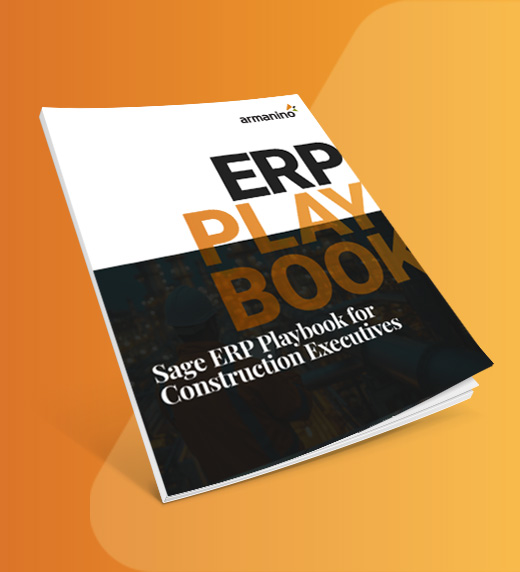
It’s 8:18 a.m., and the firehose has already started.
An owner payment request was rejected because a lien waiver was missing. The project manager just resigned. One of your major projects is trending wildly over budget. Somewhere in the mix? Unapproved change orders, material delivery delays and an ERP rollout that has so far created more disruption than relief. And always simmering in the background: margin pressures from rising costs that never seem to let up.
For today’s construction CFOs, chaos isn’t the exception. It’s the job. In this high-pressure, high-stakes industry, you can’t afford to become complacent — your team’s performance, project funding and cash flow all depend on how quickly and effectively you adapt.
Below are some top trends to anticipate in 2025 and beyond. Taking proactive steps to prepare will help you keep projects (and budgets) on track, make smarter use of your resources and protect your bottom line.
Unstable interest rates are disrupting the construction industry, causing significant delays and even project cancellations. With rates continuing to rise or stay high, developers and owners struggle to close new financing, as many projects no longer underwrite favorably. This hesitation to move forward on investments reduces project pipelines, limiting opportunities for new contracts and growth. As a result, cash flow is tightening across the board, slowing progress, increasing risk and making it harder to keep projects on track.
This uncertainty about interest rates also complicates financial planning for projects already underway. While construction loans typically lock in rates upon closing, the broader economic impact is making developers more cautious about committing to future projects. For construction companies, this translates to more time spent managing receivables, fewer projects breaking ground and increased pressure to adapt to a shrinking pool of opportunities.
If left unaddressed, this cash crunch could lead to long-term industry stagnation, causing greater competition for viable projects. Without proactive strategies to diversify your project pipeline and stabilize cash flow, you may face margin pressures and less profitability, which can threaten growth and even day-to-day operations.
Construction companies continue to grapple with rising material costs, supply chain disruptions and tariff changes on key materials like Canadian lumber and Chinese steel and aluminum, leading to higher prices, longer sourcing times and limited vendor options. As of Q1 2025, year-over-year prices for fabricated structural steel were up by over 5%, lumber and plywood rose nearly 2% and aluminum mill shapes increased by almost 17%, further straining cash flow and squeezing margins, according to Cumming research.
Companies that leaned into vertical integration, the practice of bringing trades or supply chains in-house to reduce risk, are also reconsidering that investment in light of uncertain costs and supply chain volatility.
Without strong cost controls, expenses can spiral, threatening even the best-planned budgets. All these pressures increase the risk tied to material delays and cost fluctuations and make careful project planning even more critical.
While signs point to a resurgence in trade school interest, it has yet to provide the needed relief for widespread construction labor shortages. A 2024 survey from the Associated General Contractors of America and Arcoro found that 92% of respondents struggle to hire project managers and supervisors, and 94% face difficulties filling hourly craft roles.
The talent shortage has increased subcontractor demand, giving them greater control over job selection and payment terms. To address labor gaps and maximize capacity, some companies are turning to technology, such as drones for site flyovers, to speed up inspections, reduce the need for field staff and help teams accomplish more with fewer resources.
While construction has been slow to adopt tech, companies are rapidly turning to software and automation to complete projects faster and more cost effectively, reducing risks and meeting rising client and stakeholder expectations.
For instance, cloud-based construction software lets employees manage building plans, purchase orders, work hours and job cost estimates from their phone or laptop. Construction leaders are also integrating artificial intelligence applications, from predictive analytics that flag potential delays or cost overruns to automation tools that simplify payment applications, workforce scheduling and documentation.
Modular construction and prefabrication are becoming increasingly popular as owners and developers prioritize efficiency and speed. These methods allow for shorter construction schedules, better control over materials and reduced waste.
A key advantage of modular construction is using prefabricated, standardized parts, like wall panels and roof sections. These parts fit together easily across projects, allowing flexible layouts without losing efficiency. Standardization simplifies coordination, reduces onsite labor demands, minimizes delays caused by design changes or material inconsistencies. It also makes costs easier to predict, helping you stay on budget.
The benefits of modular and prefabricated construction are driving investor interest, with funds continuing to flow into companies that specialize in developing pre-built modules, such as additional dwelling units (ADUs).
Feeling overwhelmed by high interest rates, supply chain volatility and talent shortages? Take control now with practical strategies and solutions from proven experts. Find out how our construction industry consultants can help you build an unshakable foundation for your firm, no matter what challenges lie ahead.
If you have any questions or just want to reach out to one of our experts, use the form and we'll get back to you promptly.


